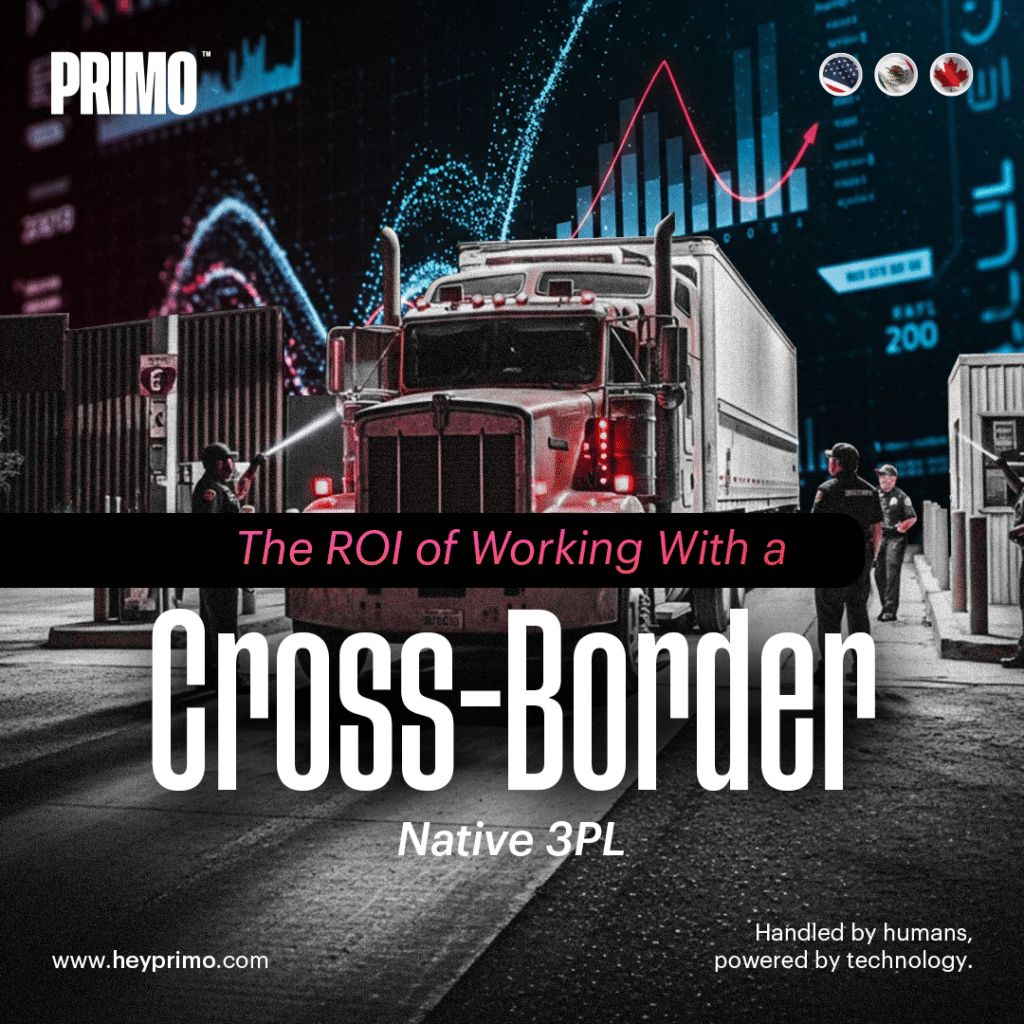
Expanding into new markets should be a growth milestone, not a logistical burden. Yet for many brands, cross-border logistics introduces hidden costs and operational friction that quietly reduce margins. The challenge is not always product quality or market demand. Often, it’s the lack of a scalable logistics strategy that can handle international complexity. Businesses that rely on freight, complex industries, and cross border trade are especially exposed to these risks without the right infrastructure in place.
The Risks of Cross Border Logistics
As global commerce grows, so does the need for logistics systems that can adapt. According to a recent report, the U.S. invested $13.5 billion in foreign direct investment with Mexico in the first nine months of 2023. This highlights the increasing importance of cross-border trade and the need for logistics solutions that can keep up.
Every delay at customs, every returned shipment and every inventory miscalculation chips away at revenue. Without localized infrastructure and regulatory fluency, companies often react to problems instead of preventing them. This reactive approach makes growth unpredictable and operations inefficient.
Brands that succeed in cross-border commerce are those that plan for speed, compliance and cost control from the beginning. Many are now turning to cross-border freight tech to streamline operations and reduce complexity.
The hidden costs of poor logistics planning are not always obvious. They build up over time. Misclassified goods can lead to unexpected duties or even seizure. Missed opportunities like Section 321 de minimis exemptions in the U.S. go unnoticed. Without guidance, companies often overpay or delay shipments due to incorrect documentation.
Shipping costs also rise when freight is not consolidated. Sending partial loads instead of grouping shipments increases per-unit costs. This is common when inventory is stored in a single domestic location and shipped internationally without a regional strategy. Disconnected systems make it difficult to reroute or adjust in real time.
For businesses with seasonal inventory like beach vacation rentals, these inefficiencies are even more damaging. Delays and stockouts during peak seasons can lead to lost sales and customer dissatisfaction. Without fulfillment centers near international customers, last-mile delivery becomes slower and more expensive.
Traditional third-party logistics providers offer broad services, but few are built for cross-border commerce. Native 3PLs are different. They have embedded infrastructure, local teams and deep knowledge of international logistics. Their role is not just to move goods. They optimize the entire journey, from customs clearance to localized delivery and returns.
Working With a Core 3PL Boosts Service
Many brands using traditional 3PLs end up layering services from multiple providers. This creates fragmentation and increases the risk of service breakdowns. A cross-border native 3PL unifies these components into a single operational system. This is especially important for companies managing complex freight, industries, cross borders operations across multiple regions.
Native 3PLs understand local customs regulations, documentation requirements and trade agreements. They classify products accurately, helping clients reduce duties and avoid compliance errors. Their in-country teams know local delivery expectations and consumer behavior. They also have strong relationships with customs officials and regional carriers, which helps reduce delays and improve service levels.
Unlike traditional providers that outsource warehousing, native 3PLs offer integrated logistics stacks. Regional fulfillment hubs allow inventory to be stored closer to customers. This reduces last-mile delivery times and costs. Inventory management, order fulfillment and tracking are handled through connected systems, which eliminates blind spots and speeds up decision-making.
How to Optimize Your Next 3PL Partnership for Cross Border Needs
To get the most from a native 3PL, brands should take the following actions:
Consolidate shipments to reduce per-unit freight costs
Use local carrier relationships to improve delivery reliability
Classify goods correctly to avoid overpaying duties
Store inventory near demand centers to reduce delivery time
Track shipments in real time to respond to disruptions
Place inventory dynamically based on regional demand patterns
Additional Core Benefits of Working With a Top 3PL
Speed to market is a competitive advantage. Native 3PLs provide immediate access to regional fulfillment and transport networks. This allows brands to launch in new markets without the delay or cost of building infrastructure. Orders can be fulfilled within weeks, not months. This flexibility supports both B2B and direct-to-consumer models.
Compliance is another area where native 3PLs add value. Regulations change often. Documentation standards vary by country. Native providers monitor these changes and adjust processes automatically. Automated systems generate accurate customs paperwork, reducing errors and avoiding costly delays.
The benefits of a native 3PL extend beyond shipping. When logistics runs efficiently, other parts of the business improve. Real-time tracking gives teams visibility into every shipment. This allows for faster responses to delays and better communication with customers.
Inventory placement becomes more strategic. Native 3PLs use local data and historical trends to position products near demand. This reduces stockouts and excess inventory. It also improves cash flow by keeping inventory levels aligned with actual sales.
Returns are a part of global commerce. When managed poorly, they become a major cost. A native 3PL simplifies reverse logistics. Local return centers reduce international shipping costs and speed up refunds. Clear workflows improve the customer experience and increase the chance of repeat purchases. Returned items are restocked quickly, preserving their value and improving sell-through rates.
Grow Cross Border With Purpose Through PRIMO
Global expansion does not have to mean global disruption. The logistics partner you choose affects your ability to scale, adapt and meet customer expectations. Third-party logistics is no longer just about moving goods. It is about building systems that support growth.
Connect with a PRIMO team member to learn how a cross-border native 3PL can help you expand without compromise.